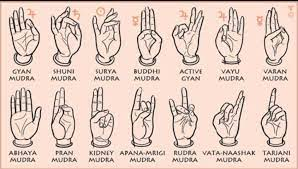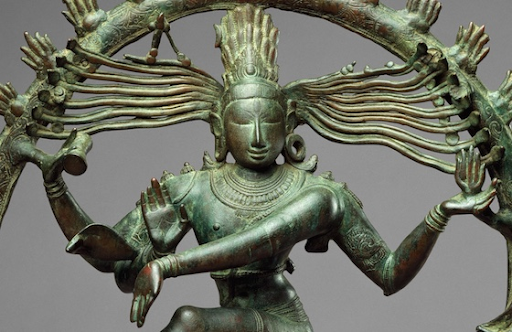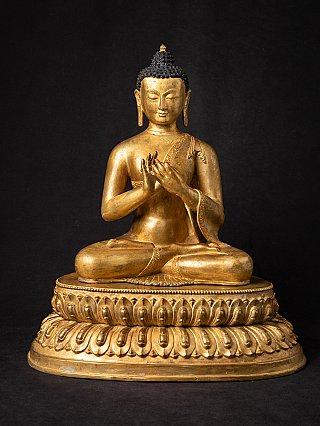Tagged: #Hastmudra #Sanatandharma
- This topic has 0 replies, 1 voice, and was last updated by .
-
AuthorPosts
-
June 19, 2024 at 6:08 pm #2087Up::1
Hand gestures and postures, known as mudras and Hastas, are a fascinating aspect of Indian iconography. They serve as a unique visual language, conveying profound meaning and symbolism beyond the physical form. This article delves into the rich history and significance of hasta mudras, exploring their role in communicating ideas, emotions, and narratives within Indian art.
At the heart of hasta mudra lies the hand itself. The word “hasta” translates to “hand” in Sanskrit, encompassing not just the palm but also the entire arm in a specific posture. The way the fingers and palms are held is what defines a mudra. These symbolic gestures can be used to express a multitude of concepts, ranging from spiritual states and emotions to the portrayal of objects held by deities.
The use of mudras in Indian iconography has a long and rich history. Evidence of mudras can be traced back to prehistoric Indian figurines, showcasing the deep-rooted connection between these hand gestures and artistic expression. Over time, the vast repertoire of hasta mudras has been documented in various ancient Indian scriptures, including the Vedas, Upanishads, and Puranas and treatises on art and dance, such as the the classical dance forms of Bharatanatyam and Odissi and the Natya Shastra. These texts meticulously categorise and define the different mudras, along with their precise hand and finger positions.

Mudras are an important of yoga practice and natyasastra (dance)
The significance of hasta mudras goes beyond mere aesthetics. They serve as a powerful tool for sculptors and artists to communicate ideas and emotions in their creations. Understanding the language of mudras can greatly enrich one’s appreciation of Hindu art. By deciphering the hand gestures employed in statues and depictions, viewers gain a deeper insight into the character, story, and message that the artist is conveying.Here are some of the most common mudras found in Hindu iconography:
Jnana Mudra: This mudra, formed by touching the tip of the thumb and index finger while the other fingers remain extended, symbolises knowledge, wisdom, and meditation.
Abhaya Mudra: As mentioned earlier, the Abhaya mudra signifies fearlessness or reassurance. It is depicted with the palm facing outwards and fingers raised, often seen in depictions of deities offering protection or solace.
Varada Mudra: This mudra, with the palm facing outwards and fingers pointing downwards, symbolises granting boons or wishes.
Kataka Mudra: The Kataka mudra is formed by extending the index finger while curling the remaining fingers inwards. It can represent arguing, reasoning, or discourse.
Chin Mudra: The chin mudra is a gesture of contemplation and introspection. It is formed by placing the thumb on the index finger, while the other fingers rest curled upon the palm.
By incorporating these mudras into their works, sculptors and artists breathe life into their creations. Mudras become a powerful tool for storytelling, allowing deities and figures to transcend their static forms and communicate with the viewer on a deeper level.

Nataraja, upper right hand in abhaya mudra

Buddha in dharmachakra mudra. It is a combined representation of jnana and vyakhyana mudra. He is in the act of spreading the Ultimate Knowledge.
It’s important to note that the meaning and interpretation of certain mudras have evolved over time. Some mudras might hold slightly different connotations in contemporary Hinduism compared to their ancient interpretations. Additionally, there are several mudras that are highly technical and intricate, not commonly found in everyday gestures. These specialised mudras are often used in depictions of deities or in classical Indian dance forms like Bharatanatyam and Odissi.
In conclusion, the Hasta mudras are a captivating element of Indian iconography, enriching sculptures and paintings with layers of meaning and symbolism. By understanding the language of mudras, we gain a deeper appreciation for the artistry and storytelling embedded within these visual representations of the divine and the spiritual. They serve as a testament to the enduring power of nonverbal communication and its ability to transcend the boundaries of language and time.
-
AuthorPosts
- You must be logged in to reply to this topic.